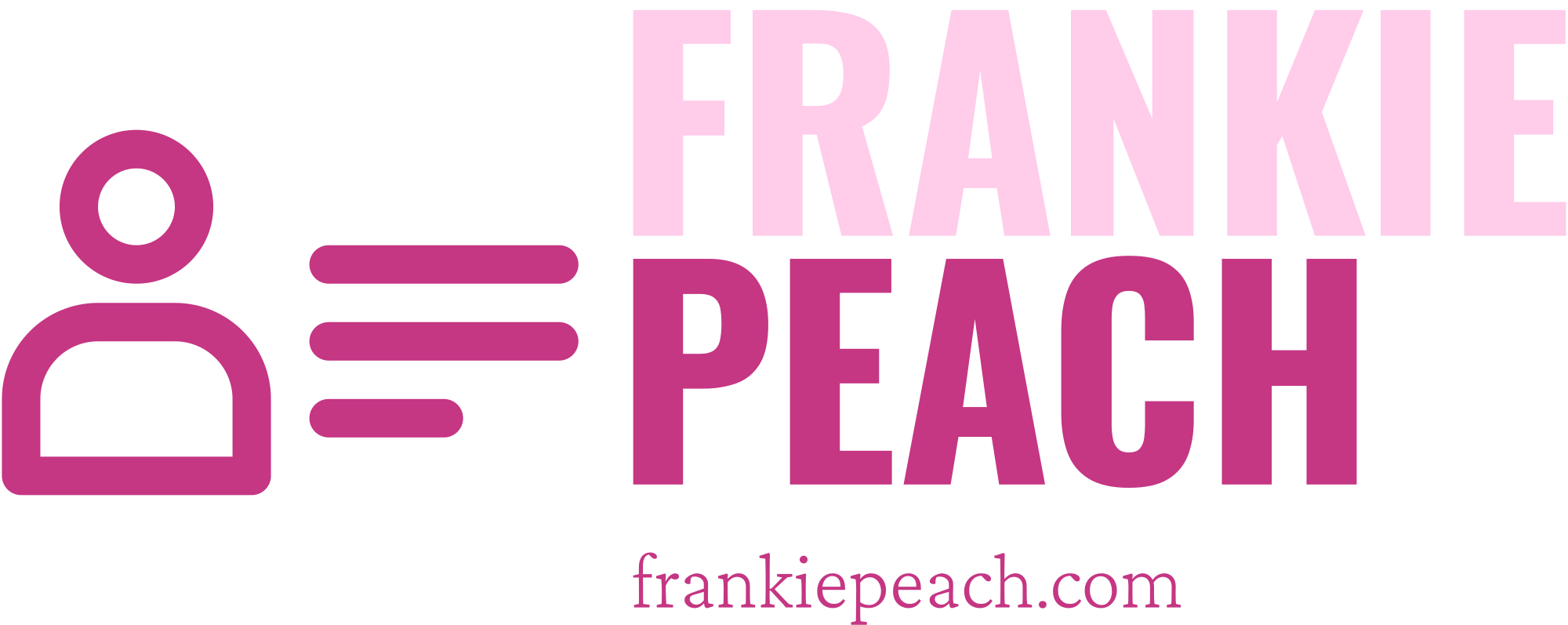Alright, so here’s the tea—Lolly is cool and all, but if you’re like me and always on the hunt for something better (or just different), you’re probably looking for other influencer platforms that give you more bang for your buck. I’ve tried out a bunch of them—some were absolute bops, others gave me “meh” vibes. So I put together this honest AF review of 29 Lolly alternatives to check out in 2025.
We’re talkin’ features, pros, cons, and prices—no fluff, no bias. Just the real deal.
1. Mavrck
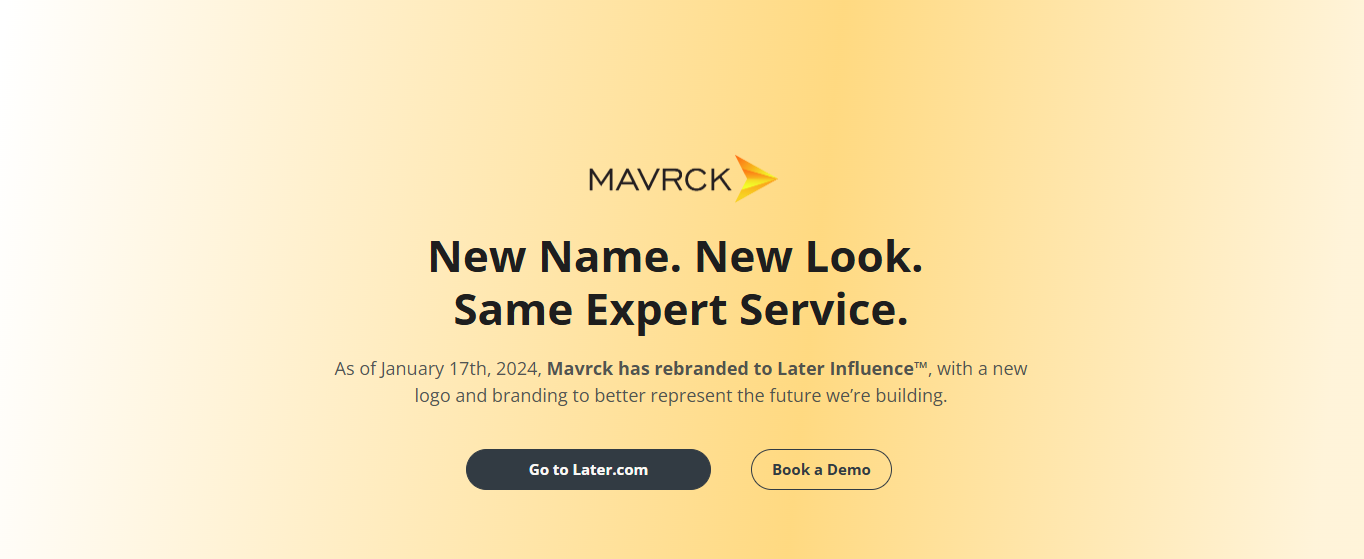
Vibe: Corporate with a sprinkle of cool.
What I Liked:
- Sick automation tools.
- Strong on micro-influencers (love that grassroots feel).
- You can scale big campaigns without pulling your hair out.
What I Didn’t Like:
- UI feels a lil clunky (like Windows XP energy).
- Not super budget-friendly for newbies or small brands.
Features:
Audience insights, influencer payments, campaign management, and CRM tools. It’s built for big teams and enterprise-y folks.
Pricing:
Enterprise-tier. Think “call us for a demo” kinda pricing. 😬
My Take:
Great for big brands, but if you’re indie or hustling solo, it might feel too beefy and expensive.
2. The Influencer Room
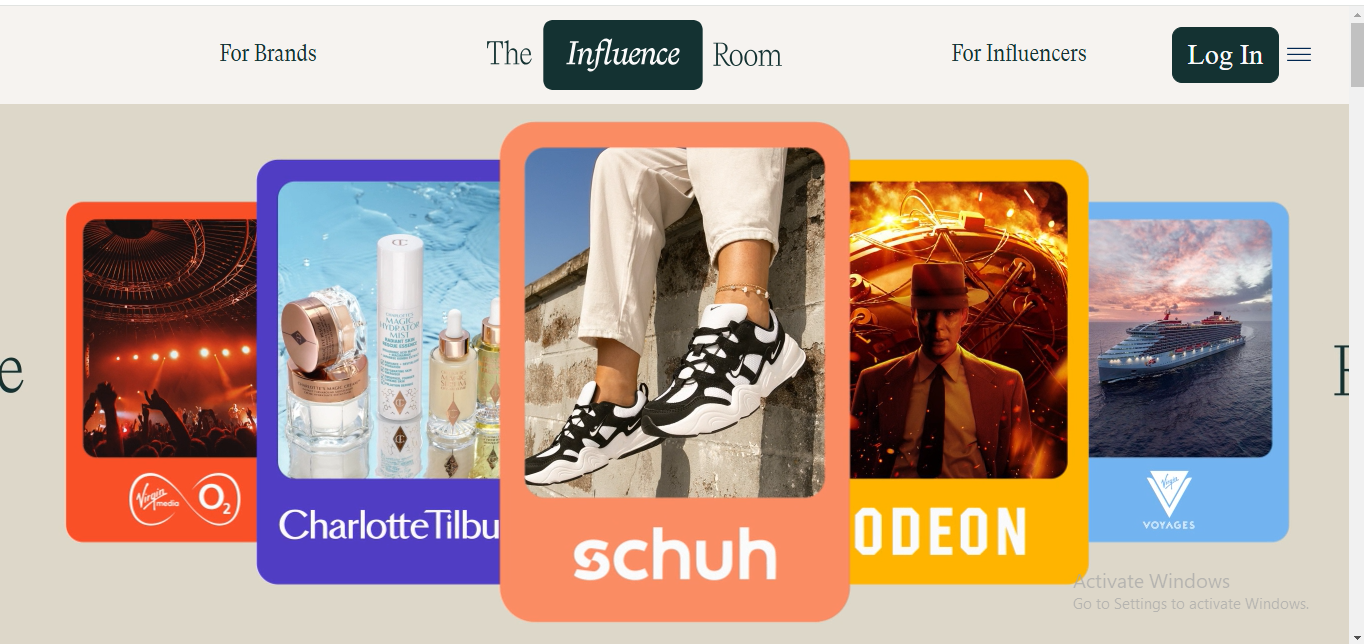
Vibe: Soho House meets IG collabs.
What I Liked:
- Invite-only community—so you’re working with peeps who are actually serious.
- High-quality partnerships, not just spray-and-pray collabs.
What I Didn’t Like:
- Bit exclusive. If you’re not a
brand darling, it’s tricky to get in. - UX is a bit of a maze.
Features:
You pitch to influencers by offering experiences instead of cash. Think: PR drops, luxe events, exclusive stuff.
Pricing:
Custom pricing depending on your clout. Definitely more tailored.
My Take:
Feels like the dating app Raya—premium, selective, and for folks who want meaningful connections.
3. Grin
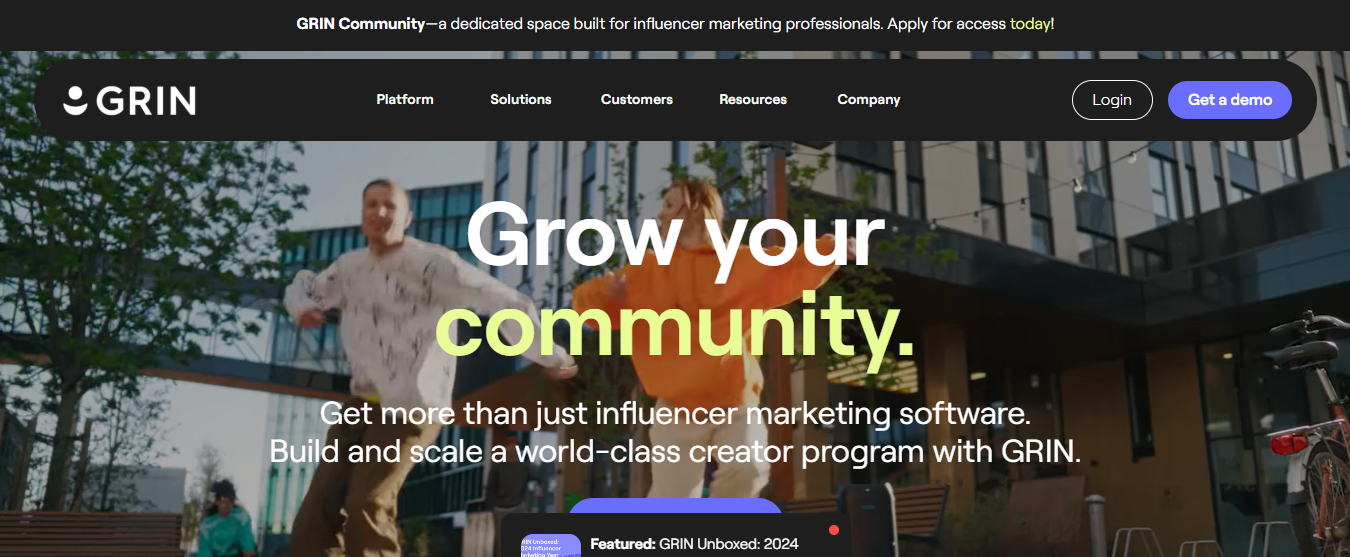
Vibe: Business in the front, party in the back.
What I Liked:
- Straight-up built for eCom brands.
- Shopify integration? YES PLEASE.
- Content rights management is 🔥.
What I Didn’t Like:
- Kind of a learning curve. Took me a hot sec to get comfy.
- On the pricier side.
Features:
CRM for influencers, affiliate link tracking, reporting dashboards, and even shipping logistics.
Pricing:
Not cheap. Aimed at DTC brands with budgets to play with.
My Take:
If you’re running an online store and you’re serious about influencer marketing, this is a major glow-up from Lolly.
4. Influencity
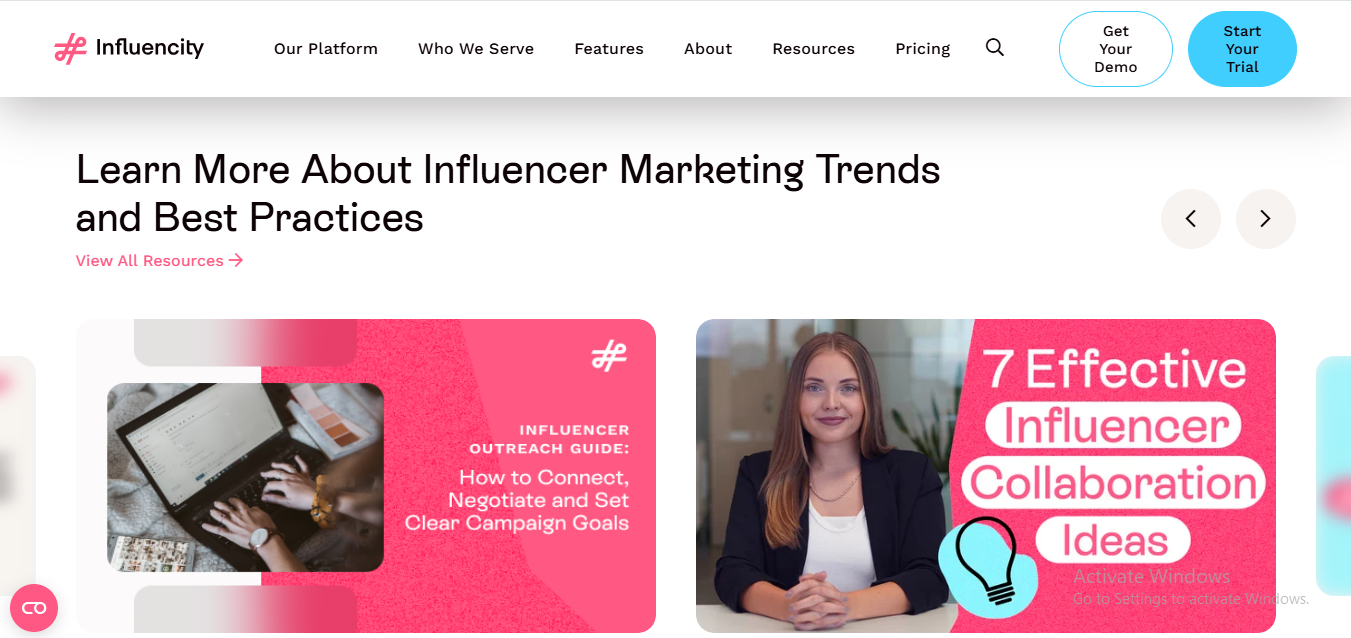
Vibe: Data nerds, rise up!
What I Liked:
- Their analytics go DEEP. Like, “I know what your influencer ate for breakfast” deep.
- Campaign reporting is chef’s kiss.
What I Didn’t Like:
- Less about community, more about numbers.
- Can feel a bit cold if you’re a creative-type.
Features:
AI-powered influencer search, audience demographics, ROI prediction, and reporting dashboards.
Pricing:
Modular plans—starts reasonably, then scales. Pretty fair TBH.
My Take:
If you’re all about the KPIs and crunching the ROI, Influencity hits different.
5. Hashtag Paid

Vibe: Chill, polished, and creator-first.
What I Liked:
- “Handraise” feature is genius. Creators opt-in to campaigns THEY love.
- Easy UI. Even your boomer boss can figure it out.
What I Didn’t Like:
- Limited niche creators in some categories.
- Campaign setup can feel a bit templated.
Features:
Branded content tools, paid ads integration, and a focus on real creator-brand love matches.
Pricing:
Mid-tier to premium. You’ll need a decent budget.
My Take:
Feels like Tinder—but for collabs. It’s a match!
6. The Cirqle

Vibe: Aesthetic overload. Visual peeps will love it.
What I Liked:
- Real-time analytics on campaigns (yes, live results).
- Gorgeous dashboard that’s easy on the eyes.
What I Didn’t Like:
- Slightly overwhelming with all the customizations.
- Might be more than you need if you’re running small-scale ops.
Features:
Influencer discovery, performance tracking, content licensing, and paid media boosting.
Pricing:
Upper-mid-range. Good value if you’re gonna use all the bells and whistles.
My Take:
This one’s for brands who live on aesthetics and vibe checks. Bonus: real-time stuff is SO addicting to watch.
7. Lolly (Just for Reference)

Vibe: TikTok meets brand collabs.
What I Liked:
- Video-first campaigns. Great for Gen Z vibes.
- Easy UX and creator discovery.
What I Didn’t Like:
- Limited analytics.
- More short-term campaign focused than long-term partnerships.
My Take:
Lolly’s fun for quick-hit campaigns, but if you’re scaling up or want deeper insights, it’s worth peeping alternatives.
8. Popular Pays
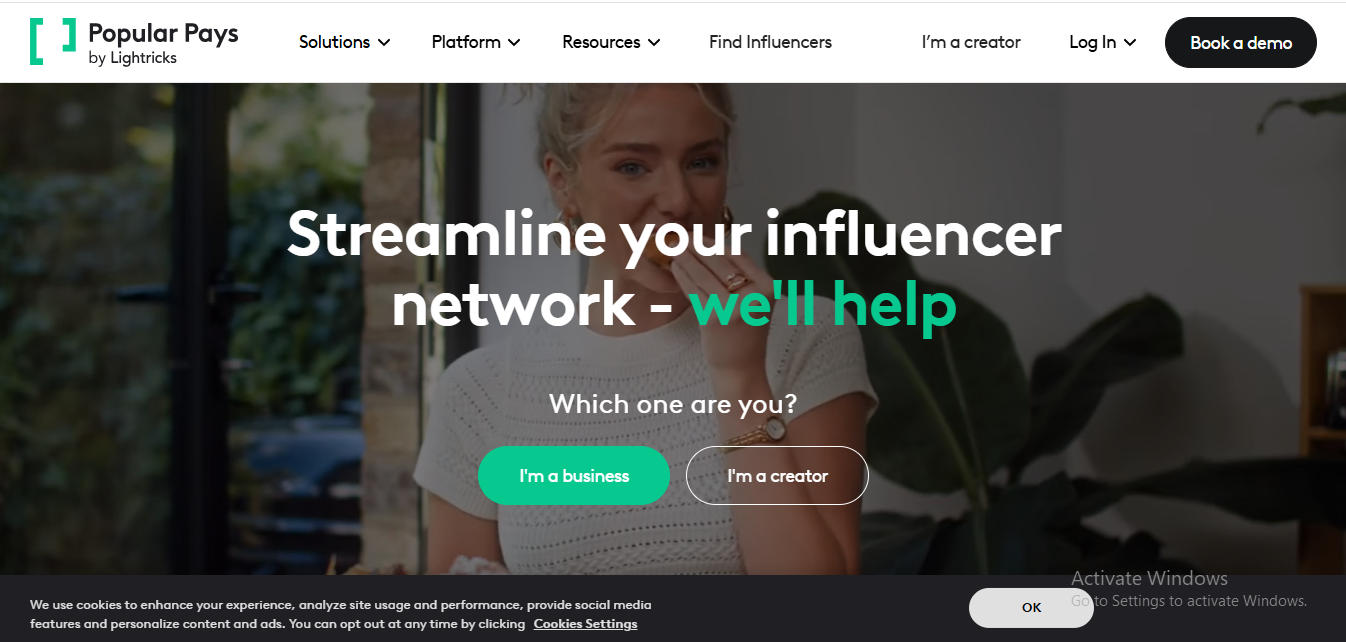
Vibe: Instagram-core meets spreadsheet life.
What I Liked:
- Built-in marketplace = fast collabs.
- Great for UGC campaigns (like those cute aesthetic coffee reels).
- Content creation feels more curated than chaotic.
What I Didn’t Like:
- Some brands ghost, which is super annoying.
- Reporting tools aren’t the most advanced.
Features:
Find creators, launch campaigns, and manage content in one place. Also good for turning content into paid ads.
Pricing:
Custom pricing. Not super transparent, which gives off “ask your dad” energy.
My Take:
If you’re all about content-first campaigns (especially video or Reels), this one hits. Less about deep data, more about vibes and visuals.
9. Collabstr
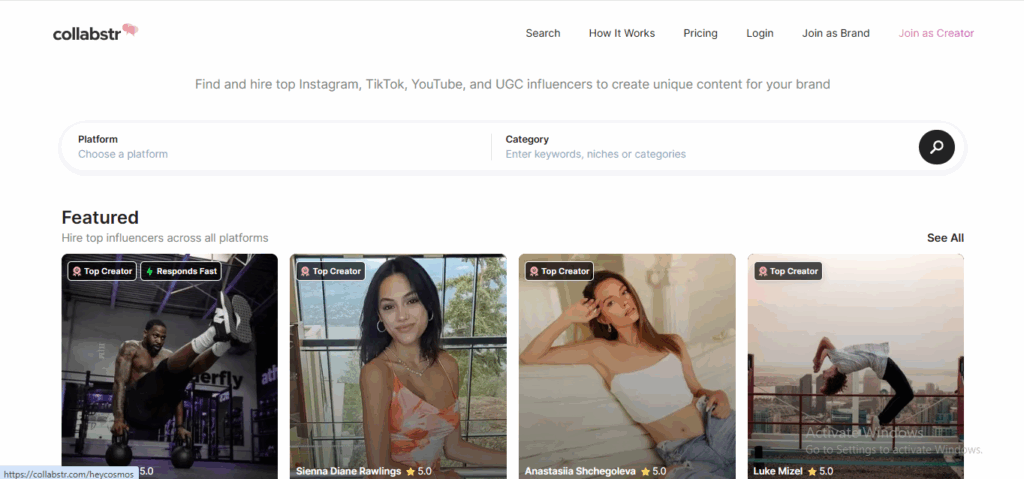
Vibe: Influencer Fiverr—fast, no strings, just biz.
What I Liked:
- You can book creators like you’re ordering Uber Eats.
- Upfront pricing. LOVE that.
- Great for testing influencers without a full-blown campaign plan.
What I Didn’t Like:
- No long-term relationship tools.
- Feels very transactional.
Features:
Search creators by niche, platform, and budget. Book ’em, brief ’em, done.
Pricing:
Starts low (like $50 range!), which is perf if you’re ballin’ on a budget.
My Take:
Solid starter pack for beginners or if you need content yesterday. Just don’t expect hand-holding or post-campaign hugs.
10. Kolsquare

Vibe: Euro-chic with big data energy.
What I Liked:
- Killer audience insights and advanced filters.
- You can search creators by very niche stats (hello, micro-niche fans).
What I Didn’t Like:
- Slight learning curve for non-techies.
- UI feels a bit… corporate?
Features:
Deep data search, influencer CRM, campaign planning, and tracking.
Pricing:
Mid to high-tier. It’s got the Euro luxury label, ya know?
My Take:
If you love digging into audience personas and data sheets before you even say “hi” to a creator, this one’s your new toy.
11. Captiv8
Vibe: Hollywood PR meets Silicon Valley startup.
What I Liked:
- AMAZING for big brands doing influencer + paid media mashups.
- Real-time insights (watching data live is like bingeing a reality show).
What I Didn’t Like:
- Can feel overwhelming for smaller teams.
- Setup takes a minute.
Features:
Full-stack influencer marketing suite: discovery, campaign management, content tracking, and paid media integrations.
Pricing:
Enterprise-level. Not for scrappy side hustles.
My Take:
Big agency vibes. If your brand is dropping serious cash and looking for reach + data + ROI = bingo.
12. Aspire (formerly AspireIQ)
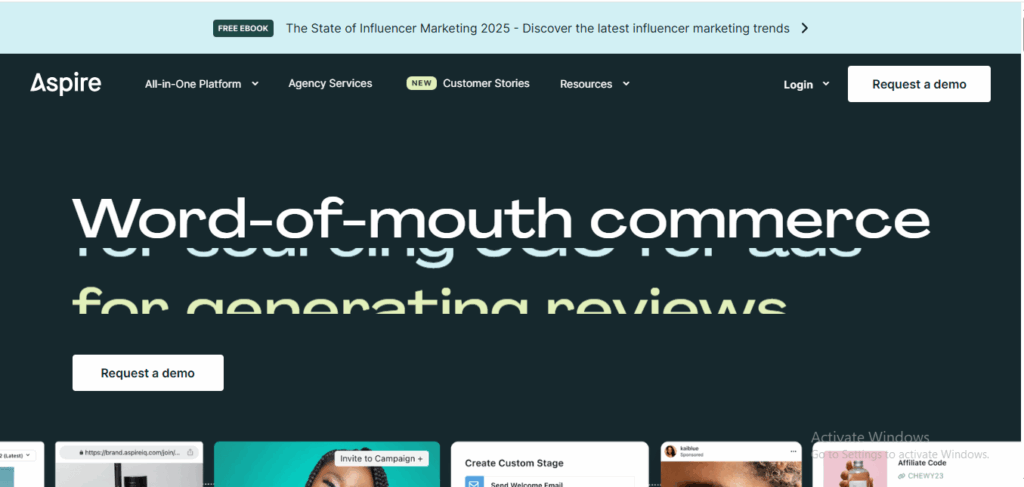
Vibe: Creator-led collabs with a Pinterest moodboard twist.
What I Liked:
- Focus on creator relationships, not just campaigns.
- Super user-friendly UI—felt like a Canva for influencer campaigns.
- Amazing for eCom brands and UGC!
What I Didn’t Like:
- You need volume for it to really shine.
- Some features locked behind higher tiers.
Features:
Discovery, creator CRM, content approval, affiliate tracking, and more.
Pricing:
Starts affordable, but scales up fast depending on your needs.
My Take:
It’s like the Spotify of influencer platforms—personal, pretty, and great for long-term brand-creator relationships.
13. TRIBE

Vibe: Influencer speed-dating meets Shark Tank.
What I Liked:
- Brands post briefs, creators pitch—super interactive.
- You get to approve content before payment.
- Perfect for creative collab lovers.
What I Didn’t Like:
- Not ideal for influencer relationship-building.
- Limited advanced analytics.
Features:
Briefs, pitches, content approval, campaign analytics, and boosting options.
Pricing:
Starts low—perfect for brands that like to test the waters.
My Take:
Quick campaigns? Check. Creative control? Check. TRIBE feels like crowdsourcing content, but with influencer flair.
14. Braze

Vibe: Not your average influencer platform—it’s more customer engagement meets brand magic.
What I Liked:
- Brilliant for integrating influencers into the whole customer journey.
- Data-driven personalization.
What I Didn’t Like:
- Not an influencer platform in the traditional sense.
- Can be overkill if you just want collabs.
Features:
Customer messaging, in-app campaigns, data personalization, influencer + lifecycle marketing mashups.
Pricing:
Definitely in the premium zone. Not for hobbyists.
My Take:
Braze is for brands thinking bigger than just posts—it’s about full-funnel influence. Think: from the feed to the cart.
15. IZEA
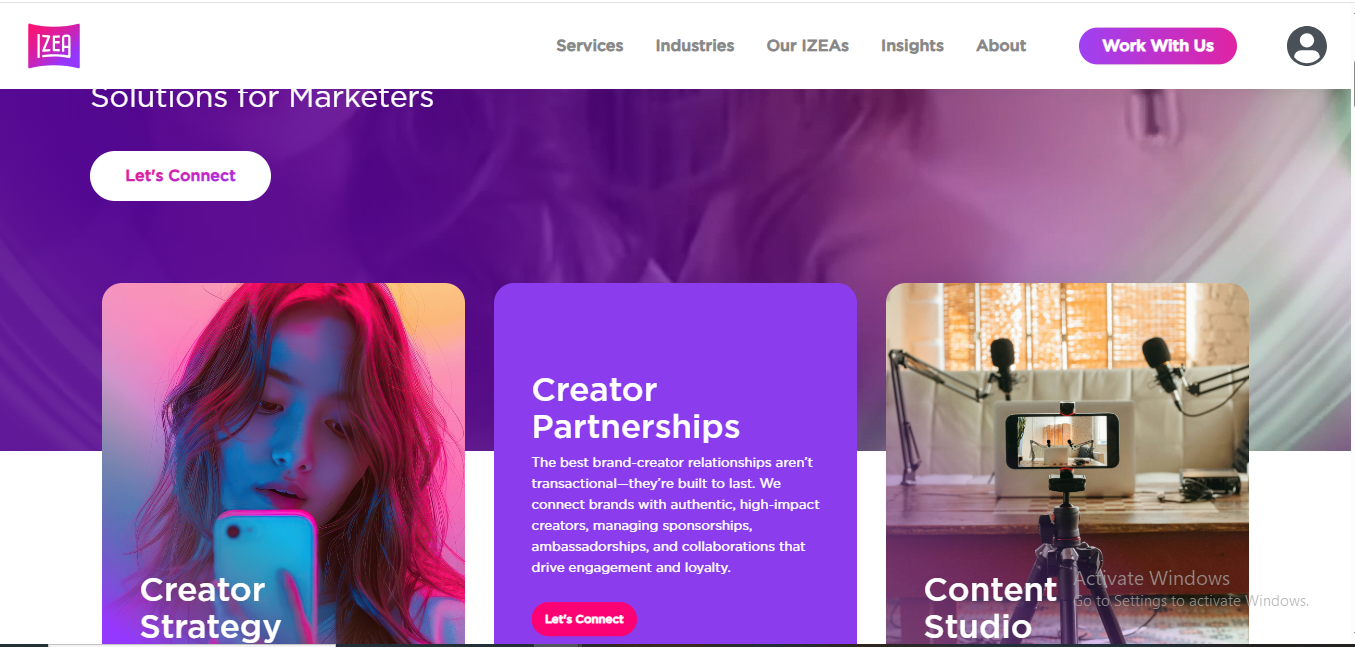
Vibe: OG influencer platform that’s still doing the thing.
What I Liked:
- Their marketplace is super plug-and-play.
- Campaign tracking is clean—like Google Analytics but prettier.
- Has both creators and influencers (yes, there’s a diff).
What I Didn’t Like:
- UX feels a little… 2018? Still works tho.
- Small creators might get lost in the crowd.
Features:
Discovery, campaign workflow, payments, performance analytics, plus access to both micro and mega creators.
Pricing:
Flexible tiers. DIY plans start around $500/month, but enterprise stuff is custom (read: pricey).
My Take:
Still a solid choice if you want options. It’s like the Walmart of influencer platforms—everything in one place, but maybe not your fave store to hang in.
16. Insense
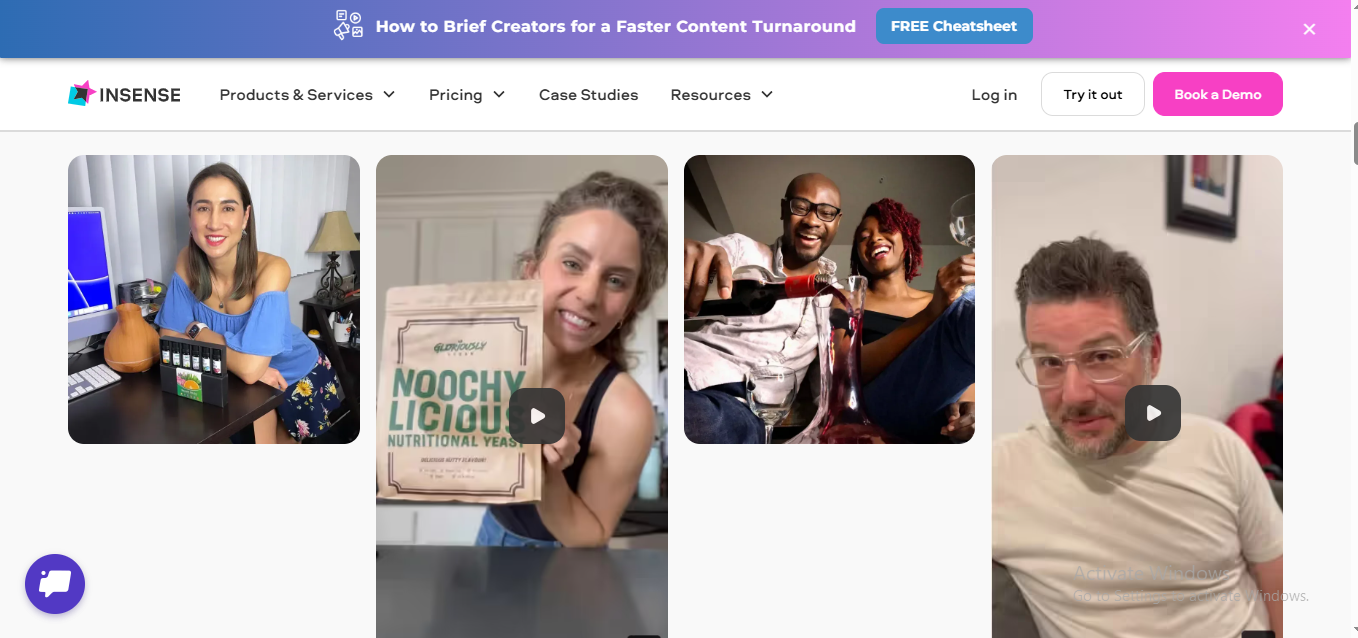
Vibe: TikTok-core meets brand collab heaven.
What I Liked:
- The content-first angle is so on trend. It’s not just about influencers—it’s about creators who make 🔥 content.
- They really get TikTok and UGC-style ads.
- Workflow is snappy and smooth.
What I Didn’t Like:
- Very focused on short-form and paid media. If you’re looking for long-term influencer partnerships, this ain’t it.
- Reporting feels basic.
Features:
Creator marketplace, direct messaging, ad-ready content production, and integration with Meta Ads + TikTok Ads.
Pricing:
Starting around $300–$500/month. Worth it if short-form is your jam.
My Take:
Insense is like the Reels of influencer platforms—quick, flashy, and hella effective (but maybe not for everyone).
17. influence.co
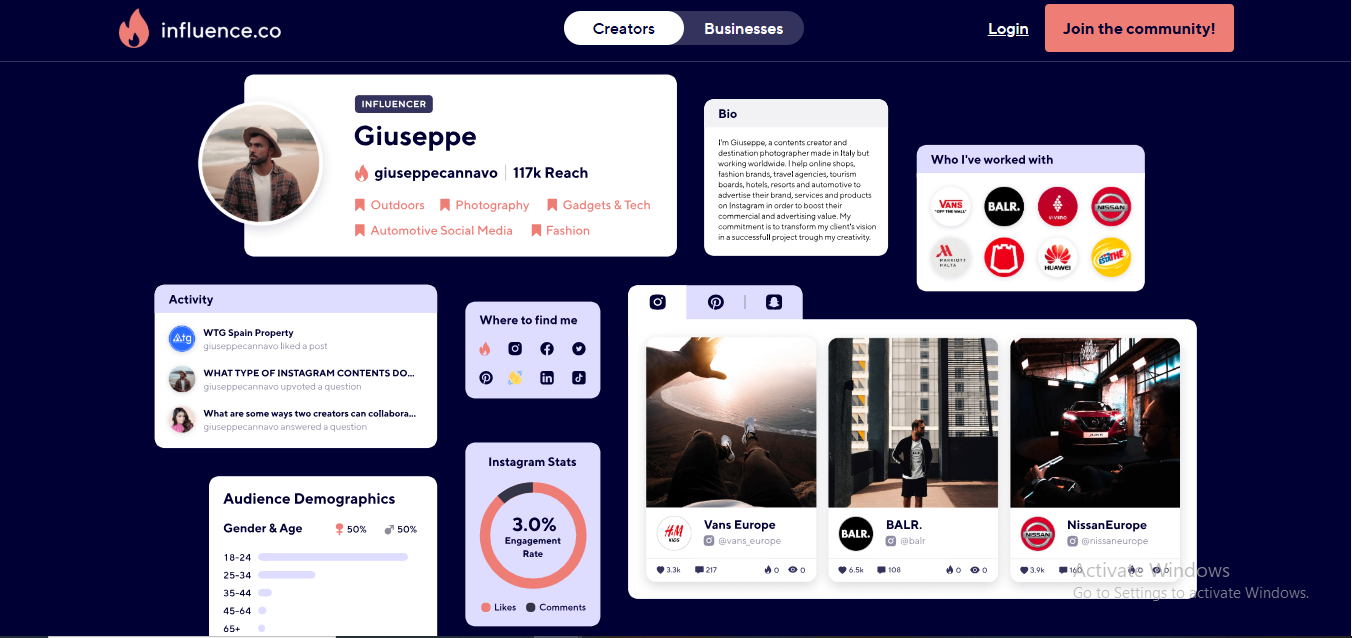
Vibe: LinkedIn + Instagram had a baby for influencers.
What I Liked:
- It’s not just a platform, it’s a community. Think networking, not just deal-making.
- Love the personal profiles and portfolios—so much more creator-friendly.
What I Didn’t Like:
- More of a discovery and networking tool than a campaign manager.
- Doesn’t have the full backend suite that others offer.
Features:
Influencer search, campaign creation, community groups, profile building, and some tracking tools.
Pricing:
Basic accounts are free. Premium features come in at $24/month-ish.
My Take:
Great for indie brands and solo creators trying to network and build street cred. But if you’re looking to run 10+ campaigns at once, you might outgrow it quick.
18. Influencer.com
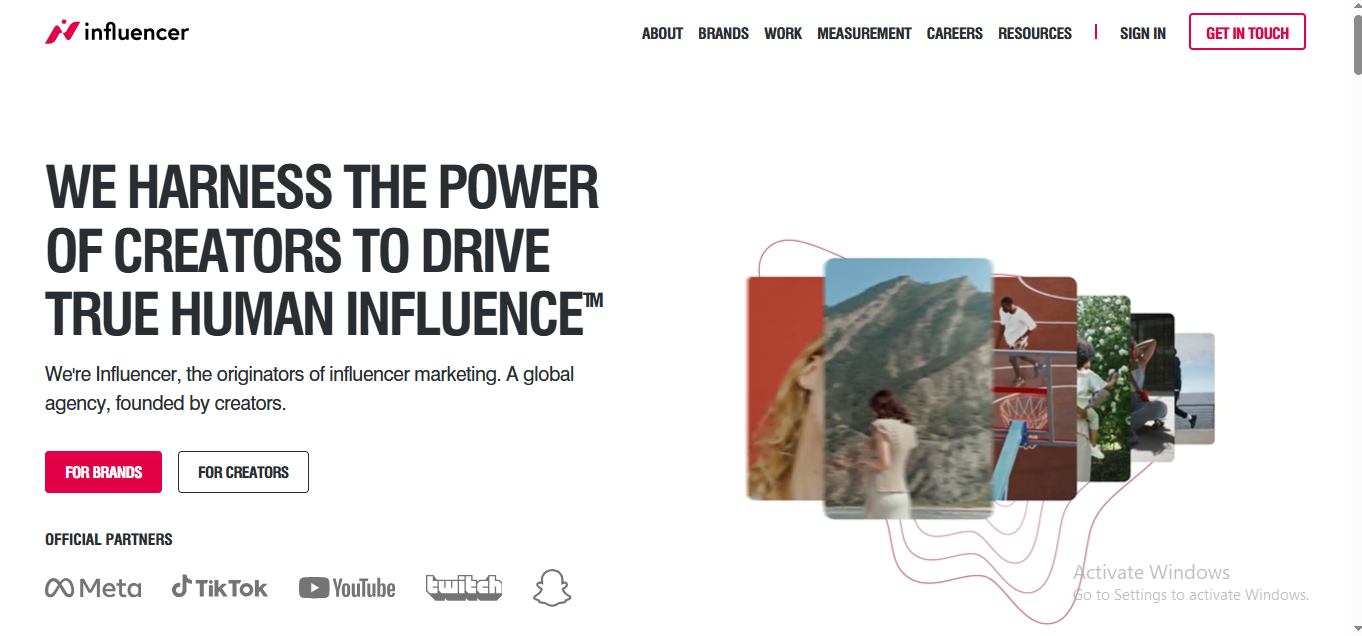
Vibe: Big brand energy with all the bells and whistles.
What I Liked:
- Full-stack: they do strategy, management, reporting, the whole thing.
- Their insights? Like CSI-level deep dives into audience and engagement.
- The influencer vetting is chef’s kiss.
What I Didn’t Like:
- You NEED budget. This ain’t for small businesses.
- Not the most flexible if you like to DIY.
Features:
End-to-end campaign service, influencer discovery, creative studio, paid media support, advanced reporting dashboards.
Pricing:
Custom/enterprise pricing only. If you have to ask… yeah, it’s that kind of platform.
My Take:
If you’re a brand doing influencer stuff at scale, this platform slaps. Otherwise, it might feel like bringing a tank to a water gun fight.
19. Later
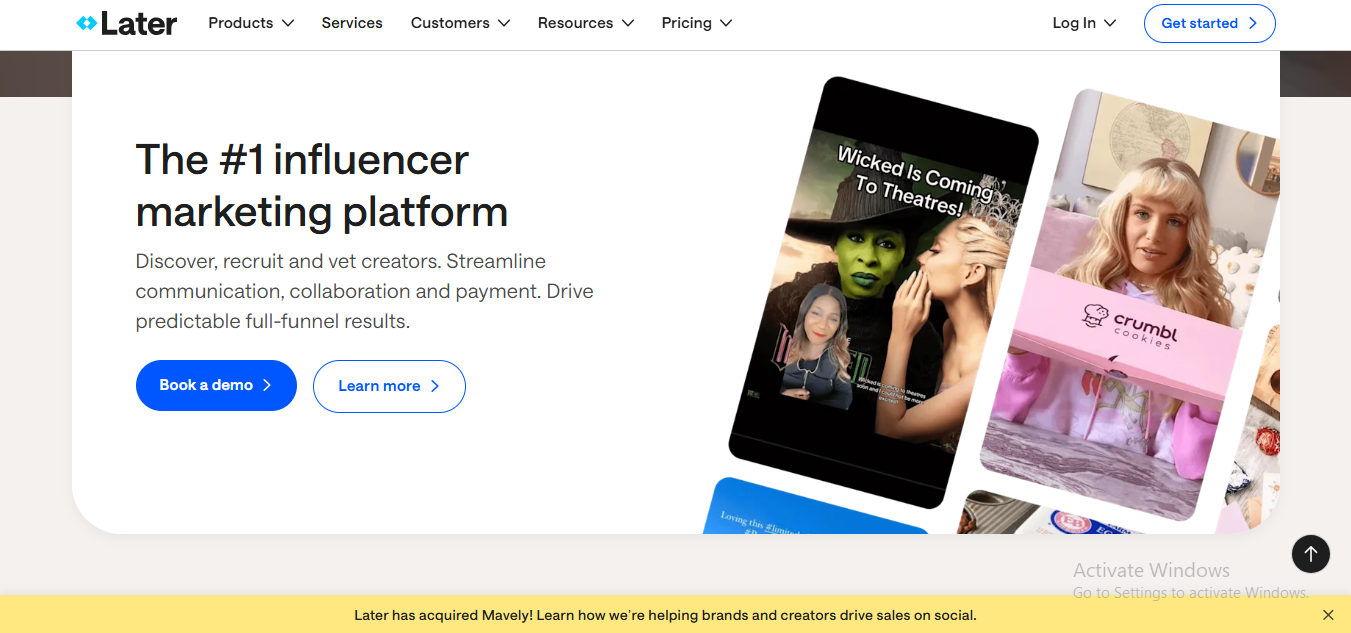
Vibe: Insta-planner turned full-blown creator marketing tool.
What I Liked:
- OMG the visual calendar for posts? So satisfying.
- Creator & brand matching feature = super easy.
- You can manage your content + campaigns all in one app.
What I Didn’t Like:
- Some influencer features are still kinda basic.
- Limited for non-visual platforms (like X/Twitter or podcasts).
Features:
Influencer discovery, campaign management, content calendar, post scheduling, performance reports.
Pricing:
Starts at $25/month for content scheduling, with influencer tools in the growth tier (around $80–$150/month).
My Take:
Later is like your fav productivity app + your fav Insta aesthetic rolled into one. It’s cute, functional, and super creator-friendly.
20. SHOUT Agency
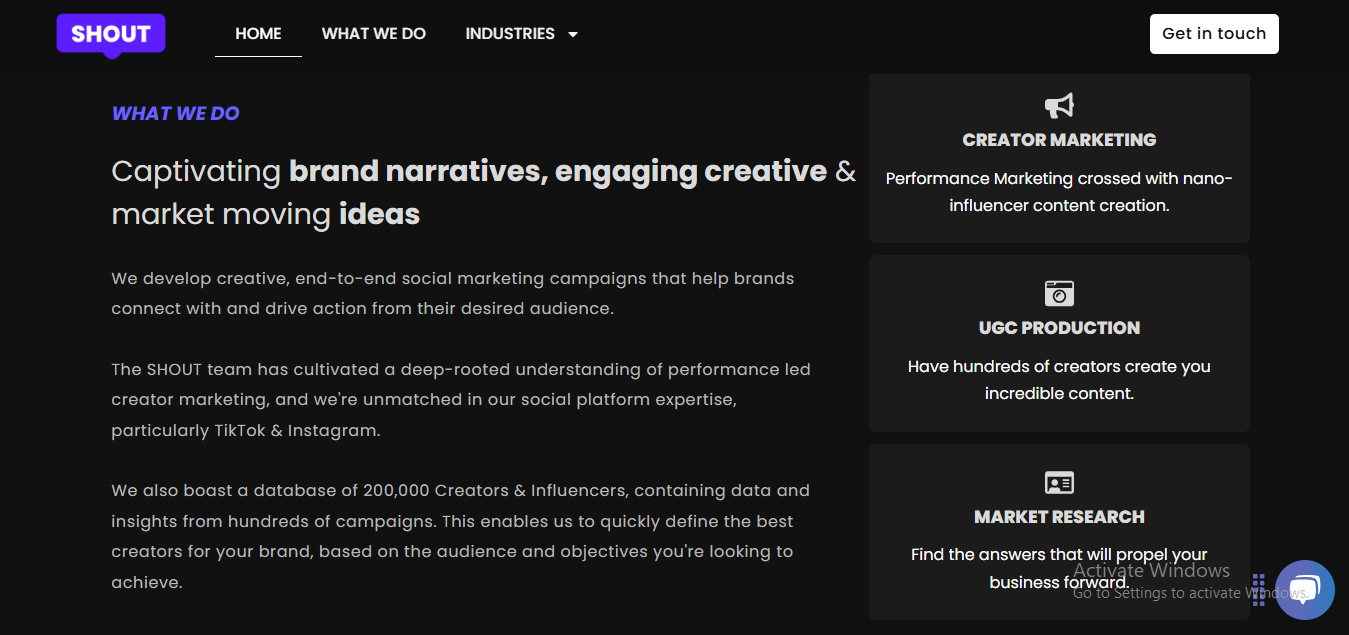
Vibe: The cool kid on the block who’s all about that authentic, grassroots energy.
What I Liked:
- Massive network of nano-influencers – think 200,000+ creators ready to shout out your brand.
- Specializes in TikTok and Instagram, so if you’re targeting Gen Z, you’re in the right place.
- Offers end-to-end campaign management, from strategy to execution.
What I Didn’t Like:
- Might not be the best fit if you’re aiming for high-profile celebrity endorsements.
- Limited information on pricing upfront.
Features:
- Creator marketing campaigns with a performance-driven approach.
- UGC production at scale.
- Market research to inform your strategies.
Pricing: Custom pricing based on campaign needs.
My Take: SHOUT Agency is perfect for brands looking to make noise with authentic voices. If you’re all about that real, relatable content, give them a shout.
21. Klear
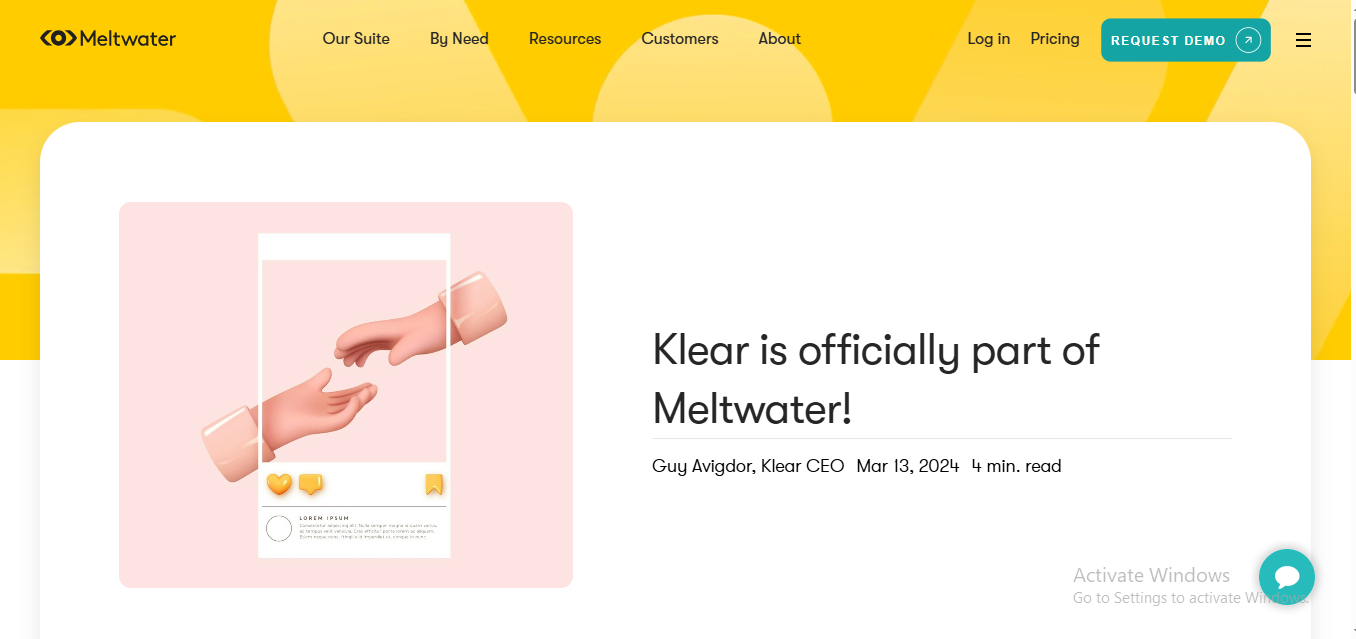
Vibe: The sophisticated, data-driven platform that’s all about making informed decisions.
What I Liked:
- Access to over 30 million influencer profiles with AI-powered search.
- In-app workflows streamline campaign management.
- Real-time analytics and reporting to track ROI.
What I Didn’t Like:
- Could be overwhelming for small businesses or solo marketers.
- Pricing isn’t transparent; you need to request a demo.
Features:
- Influencer discovery with advanced filters.
- Campaign management tools, including contracts and payments.
- E-commerce integrations for tracking conversions.
Pricing: Custom pricing upon request.
My Take: If you’re a data nerd who loves diving into analytics, Klear is your playground. Just be prepared to invest time (and money) into mastering it.
22. Brandbassador
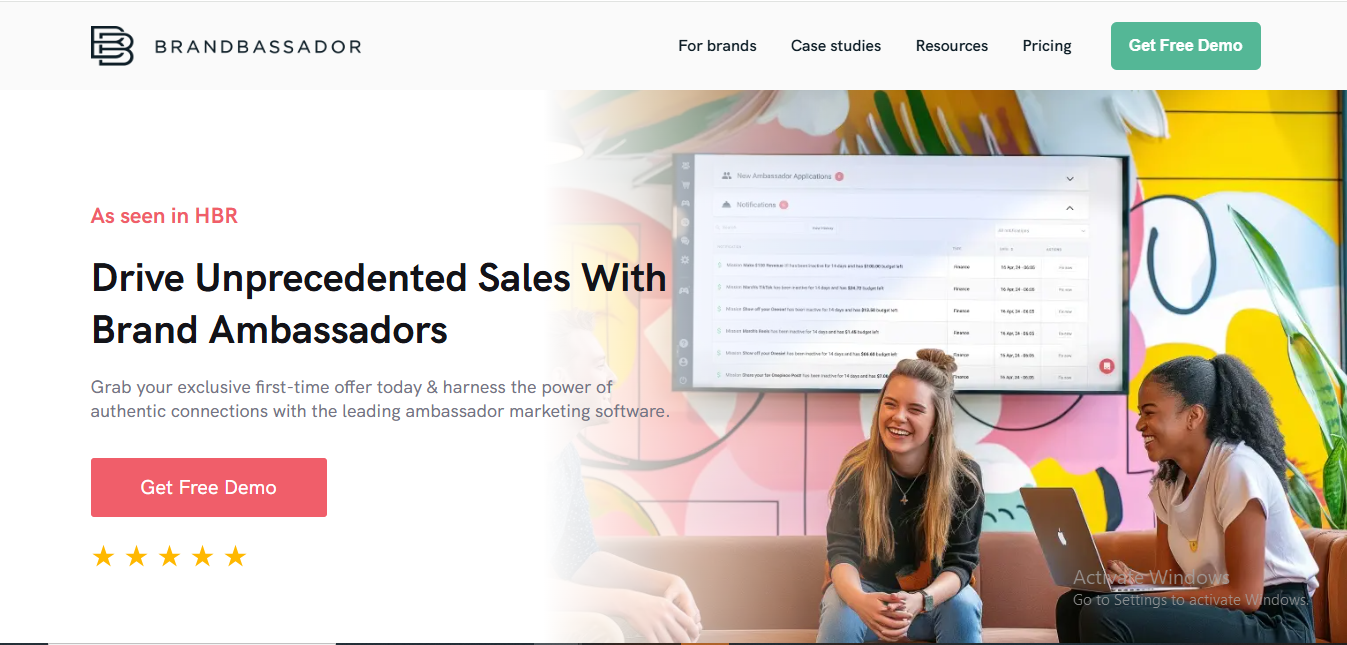
Vibe: Turning your loyal customers into your biggest brand advocates.
What I Liked:
- Focuses on building a community of brand ambassadors.
- Automates referral sales and discount codes.
- Unlimited scale – work with as many ambassadors as you want without extra fees.
What I Didn’t Like:
- May require more hands-on management to keep ambassadors engaged.
- Not ideal if you’re looking for one-off influencer collaborations.
Features:
- Ambassador recruitment and management.
- Affiliate sales tracking.
- UGC collection and content approval workflows.
Pricing: Offers various plans, including Growth, Pro, Co-Pilot, and Auto-Pilot, with pricing upon request.
My Take: Brandbassador is like building your own influencer army. If you’re into long-term relationships and community building, this one’s for you.
23. SHOUT UGC
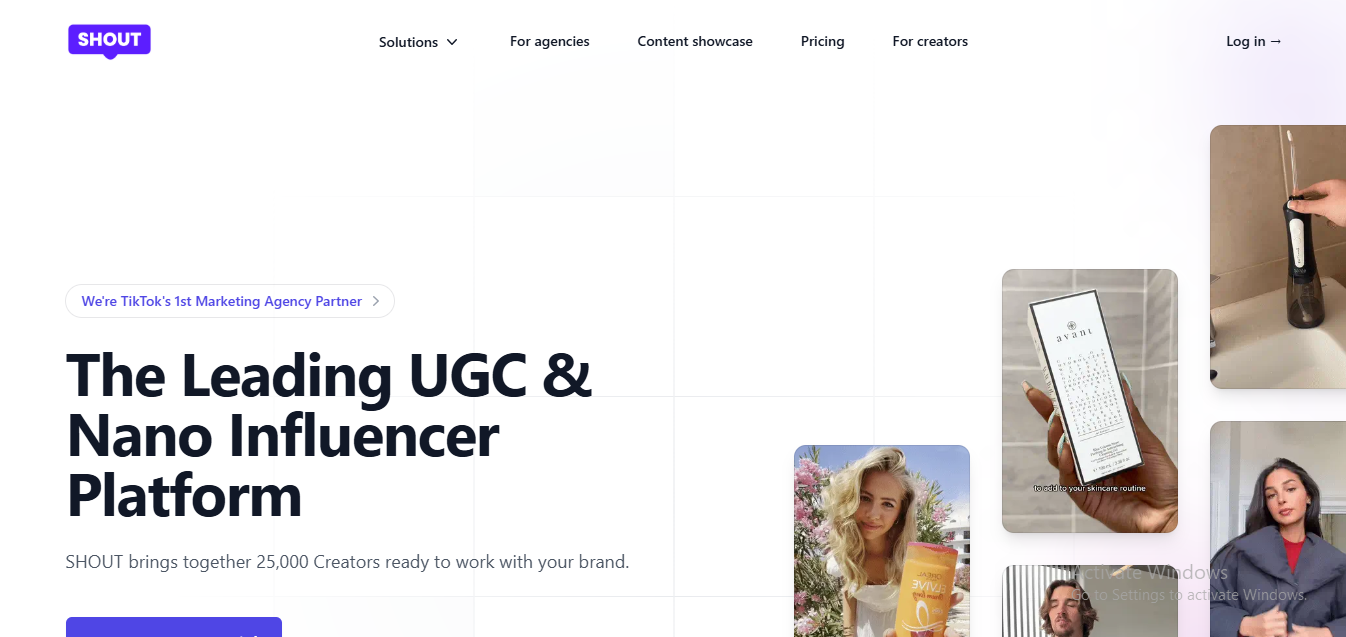
Vibe: The go-to for brands craving authentic user-generated content without the hassle.
What I Liked:
- Access to 25,000+ creators ready to produce content.
- Quick turnaround – start reviewing content in as little as 2 days.
- Transparent pricing with pay-as-you-go options.
What I Didn’t Like:
- Limited to UGC and nano-influencer content; not for large-scale influencer campaigns.
- May not offer extensive analytics or campaign management tools.
Features:
- UGC video production.
- Influencer posts on creators’ social channels.
- Simple brief submission and content review process.
Pricing:
- UGC videos from £45 each.
- Influencer posts from £95 each.
- Platform subscription at £249/month.
My Take: SHOUT UGC is perfect for brands needing fresh, authentic content without breaking the bank. It’s like having a content creation team on standby.
24. CreatorIQ
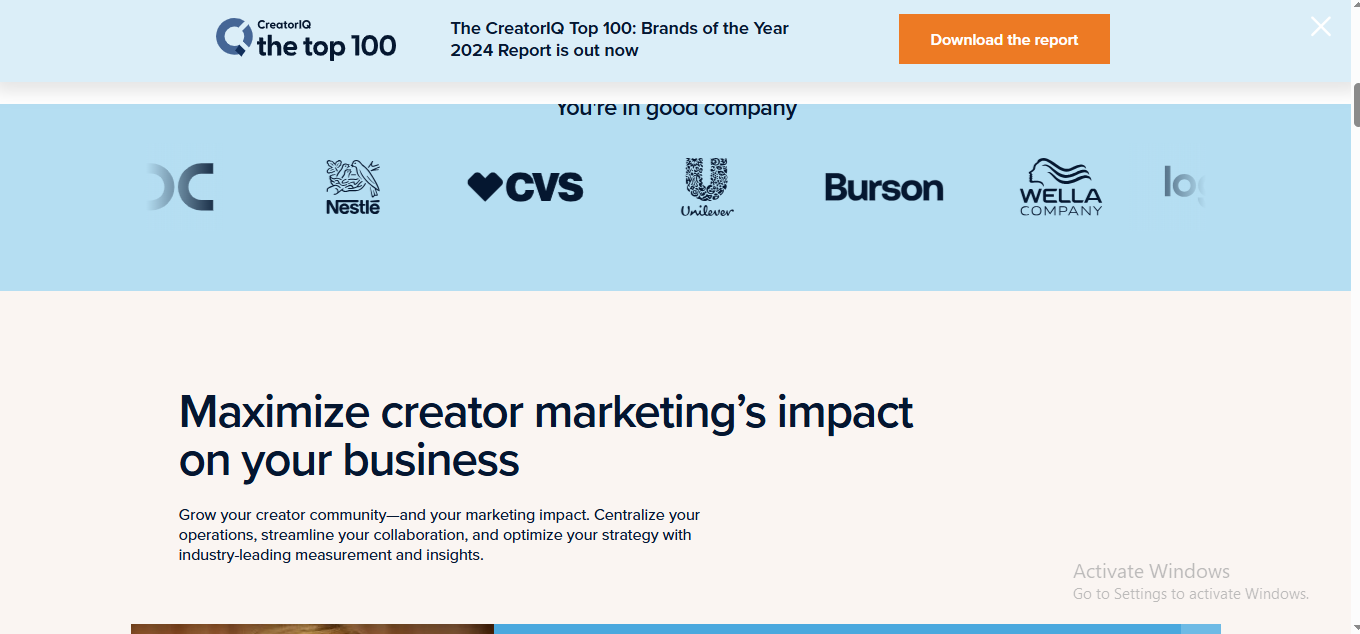
Vibe: The enterprise-level platform that’s all about scaling your influencer marketing efforts.
What I Liked:
- Comprehensive suite covering discovery, activation, optimization, and conversion.
- Robust analytics and reporting tools.
- Supports e-commerce integrations and paid social campaigns.
What I Didn’t Like:
- Geared towards large brands and agencies; might be overkill for smaller businesses.
- Pricing is custom and likely on the higher end.
Features:
- Influencer discovery and community building.
- Campaign execution and collaboration tools.
- ROI measurement and competitive benchmarking.
Pricing: Custom pricing based on business needs.
My Take: If you’re a big player looking to take your influencer marketing to the next level, CreatorIQ has the tools and scalability to make it happen.
25. InfluencerMarketing.ai (IMAI)
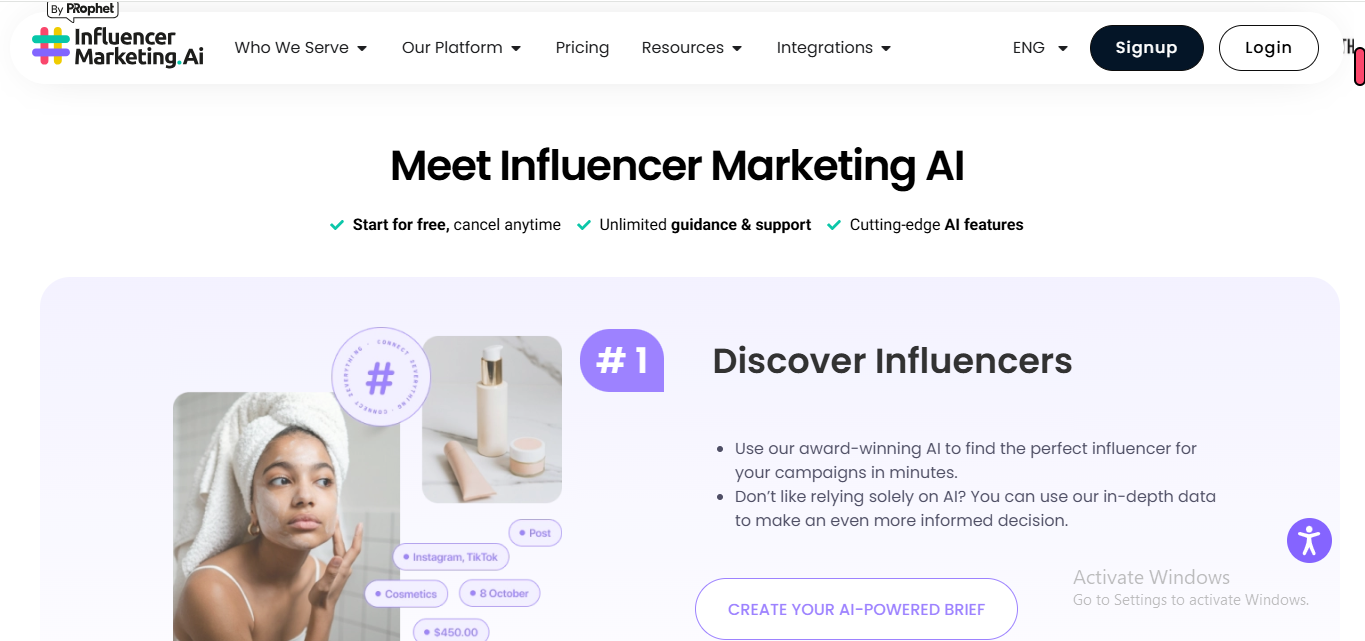
Vibe: The AI-powered wizard that’s got your back.
What I Liked:
- AI-driven campaign builder that simplifies planning and offers actionable insights.
- Deep analytics for precise targeting.
- Integrated communication tools for seamless influencer collaboration.
What I Didn’t Like:
- Comprehensive feature set can overwhelm new users.
- Top-tier functions are locked behind a premium plan.
- Occasional performance lags, especially when managing large influencer databases. growann.com
Features:
- AI-powered influencer discovery and analytics.
- Campaign tracking and sales analytics.
- Fraud detection to ensure authentic collaborations.
Pricing:
- Starter: $99/month for 50 influencer reports.
- Expert: $499/month for 350 reports.
- Unlimited: $1,200/month for 2,500 reports.
- Full Automation: $1,800/month.
My Take: If you’re all about leveraging AI to streamline your influencer marketing, IMAI is your go-to. Just be prepared to invest time in learning the ropes, especially if you’re new to such comprehensive platforms.
26. Traackr
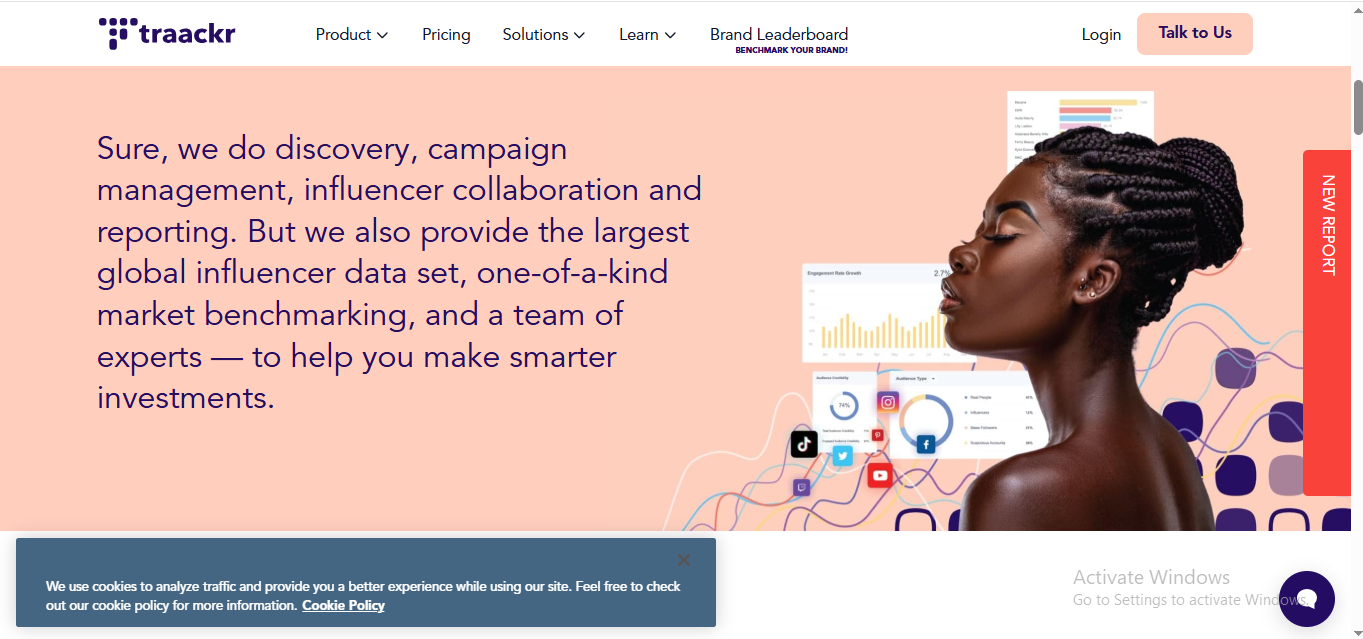
Vibe: The data-driven strategist that keeps it real.
What I Liked:
- Focus on building authentic relationships with influencers.
- Robust analytics and reporting tools.
- Tailored solutions for various industries.
What I Didn’t Like:
- Pricing is on the higher end, starting at $25,000/year.
- No free trial or version available.
Features:
- Influencer discovery and relationship management.
- Campaign execution and performance tracking.
- Budget tracking and cost analysis.
Pricing:
- Starts at $25,000/year for small teams.
- Custom pricing based on user needs.
My Take: Traackr is ideal for brands that prioritize data and authenticity in their influencer marketing. It’s a significant investment, but the insights and tools provided are top-notch.
27. Upfluence
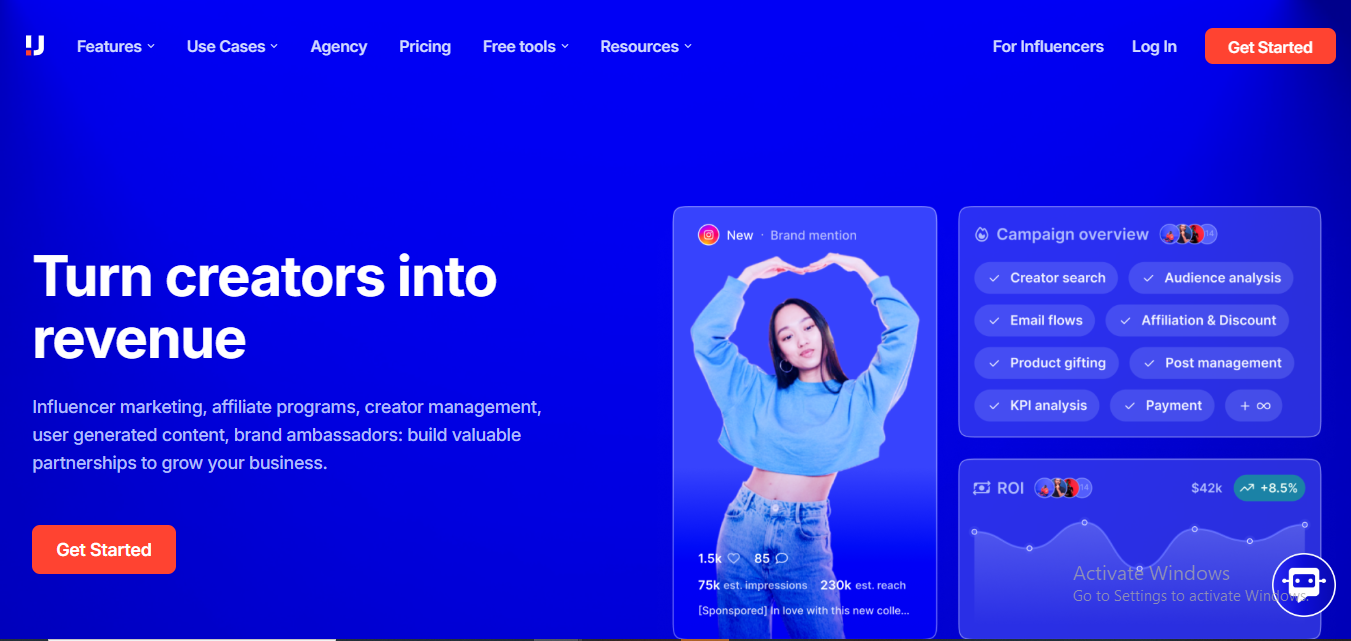
Vibe: The e-commerce enthusiast that’s all about conversions.
What I Liked:
- Dedicated integrations with platforms like Shopify and WooCommerce.
- Streamlined communication and campaign management.
- Clients report saving up to 80% of their influencer marketing budgets.
What I Didn’t Like:
- Pricing starts at around $2,000/month, which may be steep for some.
- Lacks transparency with its pricing.
Features:
- Influencer discovery and analytics.
- Affiliate and promo code management.
- Campaign tracking and ROI measurement.
Pricing:
- Growth Plan: $11,940/year for 1 seat and 5,000 influencer community.
- Scale Plan: $19,800/year for 5 seats and 10,000 influencer community.
- Enterprise Plan: $42,600/year for 25 seats and 20,000 influencer community.
My Take: Upfluence is a powerhouse for e-commerce brands looking to scale their influencer marketing efforts. If budget isn’t a constraint, it’s a solid choice.
28. Meltwater
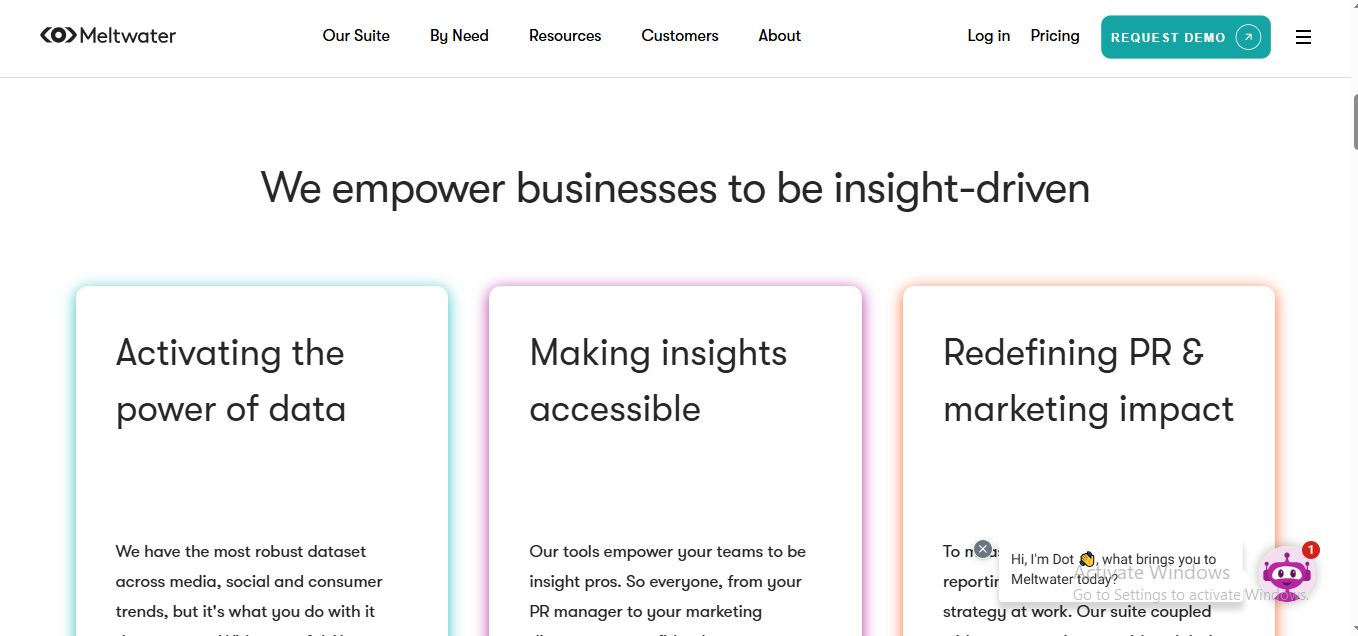
Vibe: The all-in-one media monitoring maestro.
What I Liked:
- Comprehensive suite covering media monitoring, social listening, and influencer marketing.
- AI-powered search and real-time analytics.
- Integrated tools for campaign management and reporting.
What I Didn’t Like:
- Pricing varies widely, with users reportedly paying an average of $12,000 per user per year.
- No free trial available.
Features:
- Influencer discovery and campaign execution.
- Media monitoring and social media analytics.
- Custom reporting and real-time alerting.
Pricing:
- Pricing varies based on selected solutions and services.
- Custom suites available for enterprise needs.
My Take: Meltwater is best suited for large organizations seeking a comprehensive media and influencer marketing solution. It’s a significant investment, but the breadth of features justifies the cost.
29. Social Cat
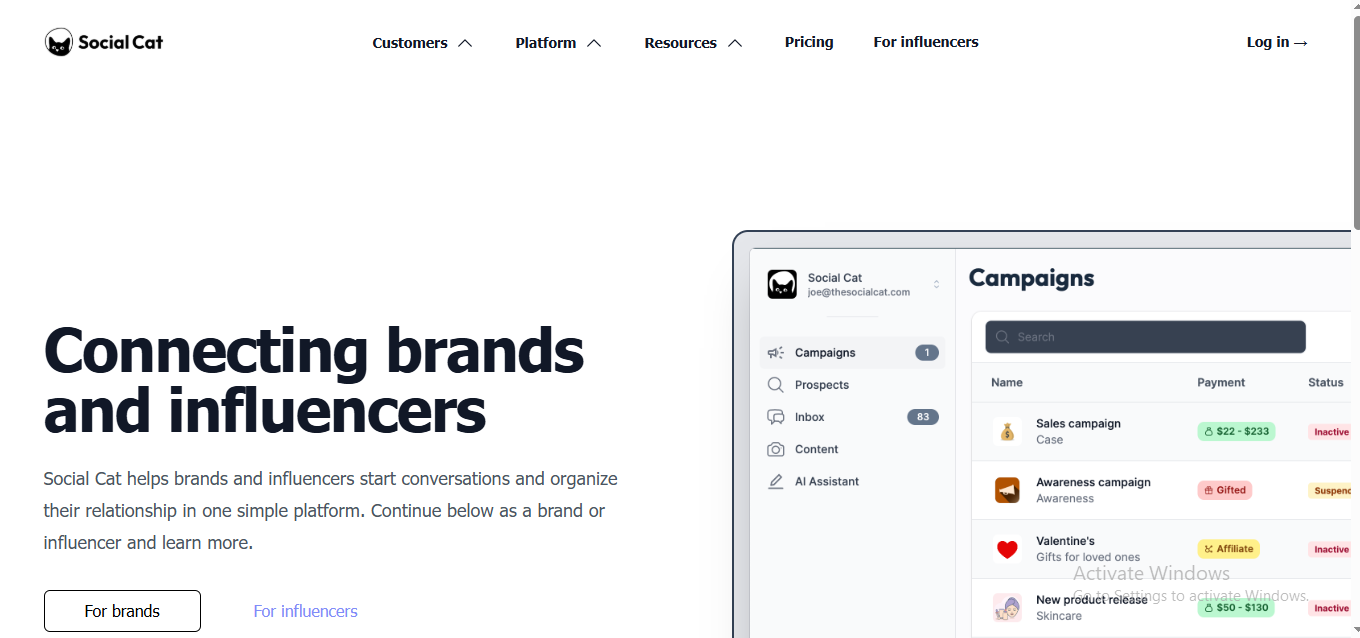
Vibe: The friendly neighborhood matchmaker for micro-influencers.
What I Liked:
- Affordable Pricing: Starting at just $49/month, it’s a steal for small businesses.
- User-Friendly Interface: Setting up campaigns is a breeze, even for newbies.
- Vetted Influencers: They ensure quality by vetting all influencers on the platform.
What I Didn’t Like:
- Limited to Instagram and TikTok: If you’re looking for influencers on other platforms, you might need to look elsewhere.
- Geographical Limitations: Primarily operates in the USA, UK, New Zealand, and Australia.
Features:
- Daily Digest Emails: Get daily updates on potential influencer matches.
- Content Library: Centralized management of all your influencer-generated content.
- AI Assistant: Helps in generating product descriptions, captions, and ad copy.
Pricing:
- Essentials Plan: $99/month – Collaborate with up to 5 creators/month.
- Performance Plan: $199/month – Collaborate with up to 15 creators/month.
- Pro Plan: $299/month – Collaborate with up to 30 creators/month.
My Take:
Social Cat is a fantastic starting point for small businesses looking to dip their toes into influencer marketing without breaking the bank. Its focus on micro-influencers ensures authentic engagements, and the platform’s simplicity is a breath of fresh air.
- Best LeadsGorilla Alternatives for 2025 - April 26, 2025
- Best Overloop Alternatives for 2025 - April 25, 2025
- Best Lead411 Alternatives for 2025 - April 25, 2025
